|
award interviews with spectroscopy 2017-2012
2017
2017 FACSS Charles Mann Awardee for Applied Raman Spectroscopy - Duncan Graham
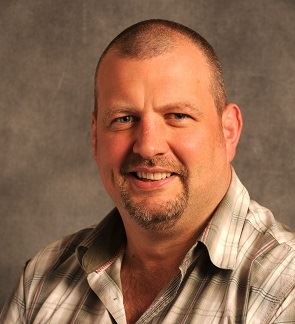
Nanoparticles, SERS, and Biomedical Research
In biomedical applications of surface-enhanced Raman spectroscopy (SERS), nanoparticles can enhance the Raman signal and provide additional functionality. Duncan Graham of the University of Strathclyde has been pushing the limits of what can be achieved using functionalized nanoparticles and SERS, in applications such as cholera detection, lipid profiling in cancer cells, and assessing the efficacy of anti-cancer drugs, For this and other work he has won the 2017 Charles Mann Award, presented by the Federation of Analytical Chemistry and Spectroscopy Societies (FACSS). He recently spoke to Spectroscopy about this work. This interview is part of a series of interviews with the winners of awards that will be presented at the SciX 2017 conference in October.
2017 ANACHEM Award - Jennifer Brodbelt
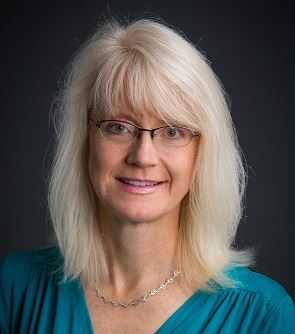 A New Mass Spectrometry Method for Protein Analysis
A New Mass Spectrometry Method for Protein Analysis
Proteomics and structural biology require specialized mass spectrometry methods for characterizing protein structures and conformations. Jennifer S. Brodbelt, a professor of chemistry at the University of Texas at Austin, focuses on the development and application of photodissociation mass spectrometry for studying biological molecules such as peptides, proteins, nucleic acids, oligosaccharides, and lipids. She recently spoke with Spectroscopy about her work with this technique. She is the winner of the 2017 ANACHEM Award, which will be presented at the SciX meeting in October 2017. The award is presented annually to an outstanding analytical chemist based on activities in teaching, research, administration, or other activities that have advanced the art and science of the field.
2017 Lester W. Strock Award - Frank Vanhaecke
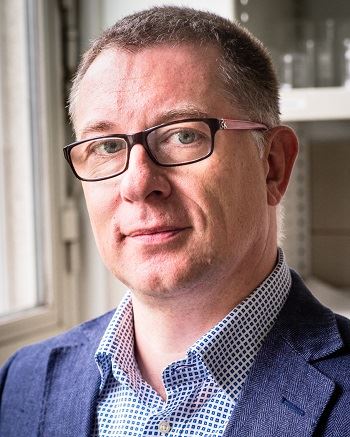 Quantitative Drug Metabolite Profiling without Radiolabels Using HPLC–ICP-MS
Quantitative Drug Metabolite Profiling without Radiolabels Using HPLC–ICP-MS
In drug development, quantitative determination of a candidate drug and its metabolites in biofluids is an important step. The standard technique for quantitative metabolite profiling is radiolabeling followed by high performance liquid chromatography (HPLC) with radiodetection, but there are disadvantages to this approach, including cost and time, as well as safety and ethical concerns related to administering radiolabeled compounds to humans. Frank Vanhaecke and his research group at Ghent University have been developing an alternative technique, and he recently spoke to Spectroscopy about this work. Vanhaecke is the 2017 recipient of the Lester W. Strock award, which will be presented to him at the 2017 SciX conference. This interview is part of a series of interviews with the winners of awards presented at SciX.
2017 Coblentz Society Craver Award Recipient - Martin Zanni
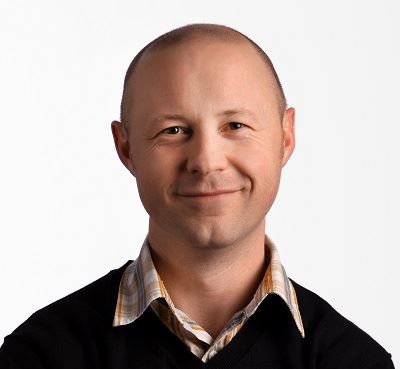 New Developments in 2D IR Advance Medical Research and Materials Analysis
New Developments in 2D IR Advance Medical Research and Materials Analysis
Coherent two-dimensional infrared spectroscopy (2D IR) uses a series of IR femtosecond laser pulses to pump and then probe the response of a system, making it possible to learn much more about the structure and dynamics of molecules than can be seen with one-dimensional IR spectroscopy. The technique’s inventor, Martin T. Zanni of the University of Wisconsin-Madison, discussed 2D IR in a 2013 interview in Spectroscopy (1). Since 2013, Zanni has applied 2D IR spectroscopy to new systems and has started a company, PhaseTech Spectroscopy, Inc., to commercialize the technique. Zanni will receive the 2017 Craver Award from the Coblentz Society for this work. This interview is part of a series of interviews with the winners of awards that will be presented at the SciX 2017 conference in October.
2017 Applied Spectroscopy William F. Meggers Award - Naoto Nagai
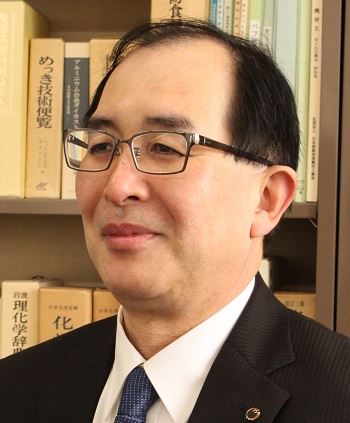 Solving Polymer Problems Using IR Spectroscopy
Solving Polymer Problems Using IR Spectroscopy
Infrared (IR) spectroscopy is a versatile analytical technique that has found application in a great variety of industries. Naoto Nagai, of the Industrial Research Institute of Niigata Prefecture in Japan, has been studying the potential of IR spectroscopy for investigating higher-order structures of polymers. He and his colleagues recently looked at the IR spectra of polyoxymethylene (POM) mold plates and the cause of occasional resin cracks. Nagai is the 2017 recipient of Sciex’s William F. Meggers Award in Applied Spectroscopy. Here, he describes his research in this area, the method used, and the challenges involved.
2017 AES Mid-Career Award - R. Scott Martin
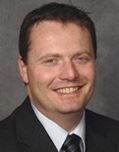 Recent Developments in Microchip Electrophoresis
Recent Developments in Microchip Electrophoresis
Capillary electrophoresis (CE) is routinely used for chemical and biochemical analysis methods, and recently the technique has been implemented on microchips. R. Scott Martin, a professor and chair of chemistry at Saint Louis University, has been investigating ways to improve these techniques for years. He recently spoke to us about his research coupling microchip electrophoresis with electrochemical detection, coupling continuous flow with microchip electrophoresis with valving, coupling microchip CE with microdialysis sampling and electrochemistry, and more. Martin is the 2017 recipient of the AES Mid-Career award, which will be presented to him at the 2017 SciX conference. This interview is part of a series of interviews with the winners of awards presented at SciX.
2016
2016 FACSS Charles Mann Awardee for Applied Raman Spectroscopy - Brian Marquardt
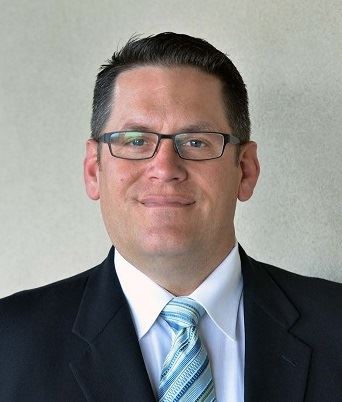 Addressing the Challenges of Process Raman Spectroscopy
Addressing the Challenges of Process Raman Spectroscopy
In recent years, Raman spectroscopy has been applied to process monitoring and control applications in a wide range of application fields, including bioprocessing, pharmaceuticals, food, oil and gas, and oceanography. Brian Marquardt, cofounder and CEO of MarqMetrix, Inc., and director and senior principal engineer with the Center for Process Analysis and Control in the Applied Physics Laboratory at the University of Washington, has more than 15 years of experience with such applications and recently spoke with us about his research. Marquardt is the winner of the 2016 Charles Mann Award presented by FACSS. This interview is part of the series with the winners of awards to be presented at the SciX 2016 conference.
2016 FACSS Innovation Award - Rohith Reddy
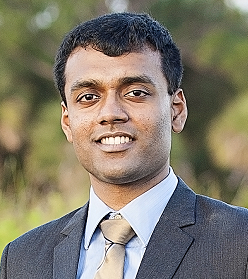 An Inexpensive Medical Device for Barrett’s Esophagus Screening
An Inexpensive Medical Device for Barrett’s Esophagus Screening
Optical coherence tomography (OCT) is an emerging technique for medical imaging that uses light to see deep inside tissue. Rohith Reddy, who is a postdoctoral research fellow at the Harvard Medical School and Massachusetts General Hospital in Boston, has worked to develop an OCT device for noninvasive diagnosis of a precancerous condition, Barrett’s esophagus. Reddy is the winner of the FACSS 2016 Innovation Award. He recently spoke to us about these efforts.
2016 ANACHEM Award - Paul Cremer
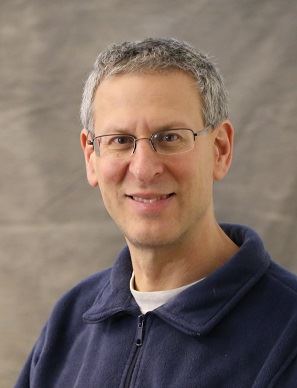 Spectroscopy at the Interface
Spectroscopy at the Interface
A wide variety of processes occur at biological interfaces, such as those between drugs and membranes, metal ions and membranes, and water and membranes. Paul S. Cremer, the J. Lloyd Huck Chair in Natural Sciences in the Department of Chemistry at Penn State, is the recipient of the 2016 ANACHEM Award, and he and his group study these processes using various novel spectroscopy and microfluidic approaches.
2016 AES Mid-Career Award - Amy Herr
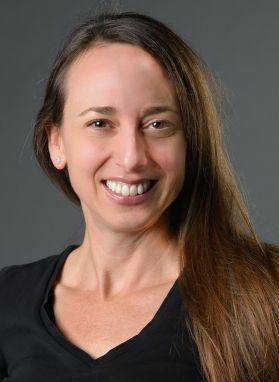 Innovating Microfluidic Technologies
Innovating Microfluidic Technologies
The future of biological and clinical research will depend on technological innovations and cross discipline co-operation as science seeks a deeper understanding of increasingly complex biological systems. The 2016 recipient of the AES Mid-Career Award, Amy Herr, and her team at the University of California Berkeley have explored these areas using a combination of chemical engineering, mechanical engineering, and electrical engineering with strong foundations in biology, material science, and analytical chemistry to innovate new microfluidic analytical technology. She recently spoke to LCGC about this work.
2015
2015 FACSS Charles Mann Awardee for Applied Raman Spectroscopy - Sanford A. Asher
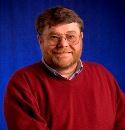 UV Resonance Raman Spectroscopy Analysis of Protein Structure and Folding
UV Resonance Raman Spectroscopy Analysis of Protein Structure and Folding
UV resonance Raman spectroscopy examines how UV light interacts with the electrons of samples and provides information about their molecular structure and dynamics. Sanford A. Asher, Distinguished Professor of Chemistry at the University of Pittsburgh, is using UV resonance Raman spectroscopy to study peptide excited states and conformations and protein folding, with the ultimate goal of helping to advance research into the mechanisms of disease. He recently spoke to us about this work.
2014
2014 FACSS Innovation Award - Garth Simpson
 Improving Drug Formulation Studies by Lowering the Detection Limits of Powder XRD
Improving Drug Formulation Studies by Lowering the Detection Limits of Powder XRD
Roughly half of all promising new drug candidates are abandoned because of poor aqueous solubility. As a result, many pharmaceutical researchers are pursuing amorphous formulations, which can show improved solubility. Those researchers need powerful analytical tools to study the trace crystalline structures in those drugs, however. To address this problem, Garth Simpson of Purdue University has developed a powder X-ray diffraction method with 100 ppm detection limits. He recently spoke to us about this work, for which he won the 2014 FACSS Innovation Award.
The Charles Mann Award: Richard Van Duyne on Fundamental Research and Practical Applications of TERS and SERS
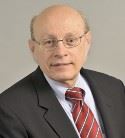 Surface-enhanced Raman spectroscopy (SERS) enhances the Raman signal using molecules adsorbed on rough metal surfaces. This interview with 2014 Charles Mann Award winner Richard P. Van Duyne of Northwestern University discusses his group's work with tip-enhanced Raman spectroscopy, single-molecule SERS, a SERS system for glucose analysis, and SERS as a method for analyzing colorants in artworks.
Surface-enhanced Raman spectroscopy (SERS) enhances the Raman signal using molecules adsorbed on rough metal surfaces. This interview with 2014 Charles Mann Award winner Richard P. Van Duyne of Northwestern University discusses his group's work with tip-enhanced Raman spectroscopy, single-molecule SERS, a SERS system for glucose analysis, and SERS as a method for analyzing colorants in artworks.
The ANACHEM Award: David E. Clemmer on Pushing the Limits on Mass Spectrometry
 Mass spectrometry is a powerful analytical tool, yet researchers and instrument makers continue to push the limits of its resolving power. One such researcher is David E. Clemmer, the 2014 Anachem Award winner. Clemmer's group at Indiana University has done extensive research to develop and improve ion trapping techniques and ion mobility spectrometry-mass spectrometry (IMS-MS) instruments to analyze biomolecular mixtures and structures. Spectroscopy recently spoke with Clemmer about this work.
Mass spectrometry is a powerful analytical tool, yet researchers and instrument makers continue to push the limits of its resolving power. One such researcher is David E. Clemmer, the 2014 Anachem Award winner. Clemmer's group at Indiana University has done extensive research to develop and improve ion trapping techniques and ion mobility spectrometry-mass spectrometry (IMS-MS) instruments to analyze biomolecular mixtures and structures. Spectroscopy recently spoke with Clemmer about this work.
Applied Spectroscopy William F. Meggers Award
 Next-Generation Infrared Spectroscopic Imaging
Next-Generation Infrared Spectroscopic Imaging
Infrared spectroscopic imaging has been advancing significantly in recent years. Key to that advance is improving the understanding of the underlying mechanisms that influence the ability to achieve greater resolution and speed. Rohit Bhargava of the University of Illinois, Urbana-Champaign, has been elucidating those mechanisms, and won the 2014 Applied Spectroscopy William F. Meggers Award for his paper on this topic. He recently spoke to Spectroscopy about his work.
The Coblentz Society Craver Award: Lynne Taylor on Improving Drug Formulations with Raman and IR Spectroscopy
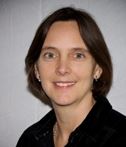 The physicochemical properties of drugs are often very diverse and challenging to analyze. Spectroscopy recently spoke with Dr. Lynne Taylor of the Department of Industrial and Physical Pharmacy at Purdue University, and the 2014 Coblentz Society Craver Award winner, about her on-going research using Raman and IR spectroscopy to study drugs and drug excipients — and the interactions of the two. Here, she discusses the various avenues of her research, including crystallization and drug-rich nanodroplets.
The physicochemical properties of drugs are often very diverse and challenging to analyze. Spectroscopy recently spoke with Dr. Lynne Taylor of the Department of Industrial and Physical Pharmacy at Purdue University, and the 2014 Coblentz Society Craver Award winner, about her on-going research using Raman and IR spectroscopy to study drugs and drug excipients — and the interactions of the two. Here, she discusses the various avenues of her research, including crystallization and drug-rich nanodroplets.
The AES Mid-Career Award: Kevin Dorfman on Electrophoretic and Microfluidic Separation Approaches for DNA Analysis
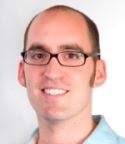 DNA can be analyzed by many techniques, including electrophoretic techniques such as gel, capillary, and microchip electrophoresis, and nanochannel methods in which DNA is labeled and stretched. This interview with Kevin Dorfman, an associate professor in the Department of Chemical Engineering and Materials Science at the University of Minnesota, and the winner of the 2014 AES Mid-Career Award, discusses his research with polymer physics and microfluidic and nanofluidic technologies.
DNA can be analyzed by many techniques, including electrophoretic techniques such as gel, capillary, and microchip electrophoresis, and nanochannel methods in which DNA is labeled and stretched. This interview with Kevin Dorfman, an associate professor in the Department of Chemical Engineering and Materials Science at the University of Minnesota, and the winner of the 2014 AES Mid-Career Award, discusses his research with polymer physics and microfluidic and nanofluidic technologies.
The Lester W. Strock Award: A New Mass Spectrometry Method for Analyzing Complex Samples
Steven J. Ray, of Indiana University in Bloomington, Indiana, has won the 2014 Lester W. Strock award for his work with a new form of mass spectrometry (MS) for analyzing complex samples: distance time-of-flight MS. In a new interview, Ray explains the technique, including how it differs from time-of-flight MS and when its use can be advantageous.
2013
Putting a Spectrometer on a Cell Phone
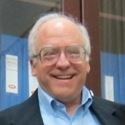 Will your next cell phone include a spectrometer? In this interview, Alexander Scheeline talks about what is involved in creating such a device, and his work toward that end. This interview is part of Spectroscopy's 2014 interview series with the winners of awards that are presented at the SciX conference.
Will your next cell phone include a spectrometer? In this interview, Alexander Scheeline talks about what is involved in creating such a device, and his work toward that end. This interview is part of Spectroscopy's 2014 interview series with the winners of awards that are presented at the SciX conference.
Understanding Biological Systems at the Quantum Level Using 2D Electronic Spectroscopy
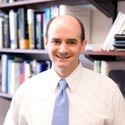 Spectroscopy recently spoke to Greg S. Engel, who is an Associate Professor in the Department of Chemistry at the University of Chicago in Chicago, Illinois, and one of the winners of the 2013 FACSS Innovation Awards. Here, Engel discusses his research examining quantum dynamics in biology, chirality in dynamics, and the use of two-dimensional electronic spectroscopy.
Spectroscopy recently spoke to Greg S. Engel, who is an Associate Professor in the Department of Chemistry at the University of Chicago in Chicago, Illinois, and one of the winners of the 2013 FACSS Innovation Awards. Here, Engel discusses his research examining quantum dynamics in biology, chirality in dynamics, and the use of two-dimensional electronic spectroscopy.
Nanometer-Scale Studies Using Tip Enhanced Raman Spectroscopy
 Volker Deckert, winner of the 2013 FACSS Charles Mann Award for Applied Raman Spectroscopy, is advancing the use of tip enhanced Raman spectroscopy (TERS) to push the lateral resolution of vibrational spectroscopy well below the Abbe limit, to achieve single-molecule sensitivity. Because the tip can be moved with sub-nanometer precision, structural information with unmatched spatial resolution can be achieved without the need of specific labels. Award will be presented at SciX 2013.
Volker Deckert, winner of the 2013 FACSS Charles Mann Award for Applied Raman Spectroscopy, is advancing the use of tip enhanced Raman spectroscopy (TERS) to push the lateral resolution of vibrational spectroscopy well below the Abbe limit, to achieve single-molecule sensitivity. Because the tip can be moved with sub-nanometer precision, structural information with unmatched spatial resolution can be achieved without the need of specific labels. Award will be presented at SciX 2013.
Improving Raman Probes for Cosmetic and Medical Research
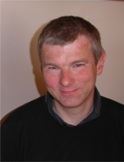 Paul Pudney and his team at Unilever won the 2013 William F. Meggers Award from Applied Spectroscopy for their paper describing the development of a new Raman probe that improves the measurement of skin. The new probe makes it possible to obtain Raman measurements that provide a more detailed measurement of the biochemistry of different areas of the skin, such as of the underarm and scalp, and can help researchers advance the understanding of conditions such as eczema and dandruff, as well as to improve skin cancer diagnoses
Paul Pudney and his team at Unilever won the 2013 William F. Meggers Award from Applied Spectroscopy for their paper describing the development of a new Raman probe that improves the measurement of skin. The new probe makes it possible to obtain Raman measurements that provide a more detailed measurement of the biochemistry of different areas of the skin, such as of the underarm and scalp, and can help researchers advance the understanding of conditions such as eczema and dandruff, as well as to improve skin cancer diagnoses
Advancing Laser Ablation Chemical Analysis
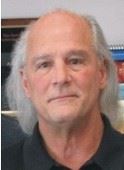 Richard Russo, winner of the 2013 Lester W. Strock Award, is known for important advances in laser ablation for use in spectrochemical analysis. In a new interview, he talks about those developments, how his career developed, and what it's like, as a research scientist, to lead a start-up company.
Richard Russo, winner of the 2013 Lester W. Strock Award, is known for important advances in laser ablation for use in spectrochemical analysis. In a new interview, he talks about those developments, how his career developed, and what it's like, as a research scientist, to lead a start-up company.
Trends in Infrared Spectroscopic Imaging
.jpg) Winner of the 2013 Craver Award. Professor Bhargava discusses current trends in IR spectroscopic imaging, including application-specific instrumentation, improvements in data interpretation, and identifying relationships between structure and spectra. This interview is part of the 2013 podcast series presented in collaboration with the Federation of Analytical Chemistry and Spectroscopy Societies (FACSS), in connection with SciX 2013, the federation's North American conference.
Winner of the 2013 Craver Award. Professor Bhargava discusses current trends in IR spectroscopic imaging, including application-specific instrumentation, improvements in data interpretation, and identifying relationships between structure and spectra. This interview is part of the 2013 podcast series presented in collaboration with the Federation of Analytical Chemistry and Spectroscopy Societies (FACSS), in connection with SciX 2013, the federation's North American conference.
Rohit Bhargava, winner of a 2012 FACSS Innovation Award
Vibrational Spectroscopic Imaging: Theory, Application, and Advances; Rohit Bhargava, P. Scott Carney, Rohit Reddy, Kevin Yeh, Thomas van Dijk, Matthew Gelber, Matthew V. Schulmerich; University of Illinois, Beckman Institute forAdvanced Science and Technology
Rohit Bhargava, the winner of the 2012 FACSS Innovation Award, explains new research into the theory of vibrational spectroscopic imaging that can lead to the development of instruments with new capability for both IR and Raman imaging, for use in various fields, including disease diagnosis.
CE-MS for Proteomics and Applications
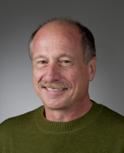 An interview with Norman Dovichi, winner of the 2013 ANACHEM Award. This interview is part of the 2013 podcast series presented in collaboration with the Federation of Analytical Chemistry and Spectroscopy Societies (FACSS), in connection with SciX 2013, the federation's North American conference.
An interview with Norman Dovichi, winner of the 2013 ANACHEM Award. This interview is part of the 2013 podcast series presented in collaboration with the Federation of Analytical Chemistry and Spectroscopy Societies (FACSS), in connection with SciX 2013, the federation's North American conference.
Combining Spectroscopic and Chromatographic Techniques
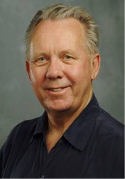 Charles Wilkins, the winner of the 2013 American Chemical Society Division of Analytical Chemistry Award in Chemical Instrumentation, has made a number of leading contributions in a wide range of analytical instrumentation including advances in Fourier transform infrared (FT-IR) spectroscopy. FT-nuclear magnetic resonance (NMR) spectrometry, ion cyclotron resonance mass spectrometry (MS), and computerized laboratory data acquisition and analysis. In a new interview, he talks about his work combining gas chromatography (GC) with IR and MS as well as work combining high performance liquid chromatography (HPLC) and NMR.
Charles Wilkins, the winner of the 2013 American Chemical Society Division of Analytical Chemistry Award in Chemical Instrumentation, has made a number of leading contributions in a wide range of analytical instrumentation including advances in Fourier transform infrared (FT-IR) spectroscopy. FT-nuclear magnetic resonance (NMR) spectrometry, ion cyclotron resonance mass spectrometry (MS), and computerized laboratory data acquisition and analysis. In a new interview, he talks about his work combining gas chromatography (GC) with IR and MS as well as work combining high performance liquid chromatography (HPLC) and NMR.
 Mark Hayes, Finalist in the 2012 FACSS Innovation Award
Mark Hayes, Finalist in the 2012 FACSS Innovation Award
Punctuated Microgradients for Electric Field Separations; Mark Hayes, Stacy Kenyon, Paul Jones; Arizona State University.
An interview with Mark Hayes, a finalist for the 2012 FACSS-SciX Innovation Award. Part of the 2013 podcast series presented in collaboration with the Federation of Analytical Chemistrya and Spectroscopy Societies (FACSS), in connection with SciX 2013, the federation's North American conference.
 Emily Smith, Finalist in the 2012 FACSS Innovation Award
Emily Smith, Finalist in the 2012 FACSS Innovation Award
Fluorescence Imaging: The First Demonstration of Far-Field, Subdiffraction Fluorescence Lifetime Imaging; Emily Smith, Michael Lesoine, Sayantan Bose, Jacob Petrich; Iowa State Univeristy; The Ames Laboratory
Emily Smith and her coworkers in the Department of Chemistry at Iowa State University developed a stimulated emission depletion (STED) fluorescence microscope and used it to collect fluorescence lifetime images. With this approach, they were able to achieve a lateral spatial resolution of 40 nm, which is an eightfold improvement in lateral resolution compared with traditional far-field optical microscopy. This system has been used to measure the organization of integrin cell membrane proteins and the cellular factors that affect integrin rearrangement.
 R. Kenneth Marcus, Finalist in the 2012 FACSS Innovation Award
R. Kenneth Marcus, Finalist in the 2012 FACSS Innovation Award
Developing a Miniaturized Atmospheric Pressure Glow Discharge Source for Atomic Spectroscopy and Desorption Ionization Mass Spectrometry; R. Kenneth Marcus, Carolyn Q. Burdette, Benjamin T. Manard, Lynn X. Zhang; Clemson University
Ken Marcus and his group at Clemson University have developed a miniaturized liquid sampling atmospheric pressure glow discharge source. Originally designed for atomic spectroscopy., the source actually works for both elemental and organic mass spectrometry. It can operate in various types of solutions, from the acidic to the saline, without ion suppression and is small and portable.
2012
REFLECTIONS ON A CAREER IN SPECTROSCOPY AND ADVICE FOR THE NEXT GENERATION
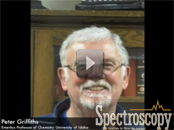 Peter Griffiths, winner of the 2012 ANACHEM award, reflects on a career in IR and Raman, and offers advice for the next generation.
Peter Griffiths, winner of the 2012 ANACHEM award, reflects on a career in IR and Raman, and offers advice for the next generation.
View on Spectroscopy Online
BIOMEDICAL ANALYSIS AT THE NANOMETER SCALE WITH SERS
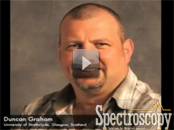 Duncan Graham, winner of the the 2012 Craver award from the Coblentz Society, on the use of SERS for biomedical analysis at the nanometer scale.
Duncan Graham, winner of the the 2012 Craver award from the Coblentz Society, on the use of SERS for biomedical analysis at the nanometer scale.
RAMAN SPECTROSCOPY FOR MEASUREMENTS IN DEEP SPACE AND THE DEEP OCEAN
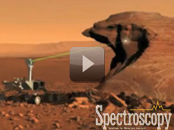 S. Michael Angel, winner of the 2012 Meggers Award and a 2011 FACSS Innovation Award, has been developing a spatial heterodyne spectrometer for conducting Raman spectroscopy in planetary space missions as well as applications here on Earth.
S. Michael Angel, winner of the 2012 Meggers Award and a 2011 FACSS Innovation Award, has been developing a spatial heterodyne spectrometer for conducting Raman spectroscopy in planetary space missions as well as applications here on Earth.
Justin Cooper, winner of a 2011 FACSS Innovation Award
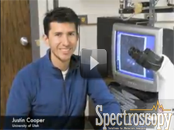 Justin Cooper and Joel Harris at the University of Utah are using single-molecule fluorescence imaging to study the dynamics of molecular transport within chromatographic stationary phases. Here is what they have found.
Justin Cooper and Joel Harris at the University of Utah are using single-molecule fluorescence imaging to study the dynamics of molecular transport within chromatographic stationary phases. Here is what they have found.
Bernhard Lendl and Cosima Koch, winners of a 2011 FACSS Innovation Award
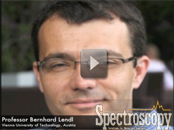 Bernhard Lendl and Cosima Koch of the Vienna University of Technology have developed a new method for on-line monitoring of fermentations using mid-infrared spectroscopy.
Bernhard Lendl and Cosima Koch of the Vienna University of Technology have developed a new method for on-line monitoring of fermentations using mid-infrared spectroscopy.
Laser Ablation Molecular Isotopic Spectrometry: A New Dimension of LIBS
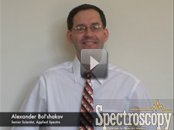 Alexander A. Bol'shakov is a senior scientist with Applied Spectra, Inc. (Fremont, CA). Dr. Bol'shakov and colleagues won a FACSS Innovation Award at the 2011 SciX conference for a presentation on Laser Ablation Molecular Isotopic Spectrometry.
Alexander A. Bol'shakov is a senior scientist with Applied Spectra, Inc. (Fremont, CA). Dr. Bol'shakov and colleagues won a FACSS Innovation Award at the 2011 SciX conference for a presentation on Laser Ablation Molecular Isotopic Spectrometry.
Ralph Sturgeon on Current Issues in Atomic Spectroscopy: Sample Introduction, Speciation, Isotope Analysis, and Nanomaterials
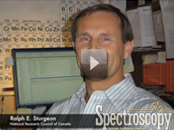 Ralph E. Sturgeon's contributions to analytical atomic spectroscopy have been recognized through a number of awards, including Fellowship in the Chemical Institute of Canada (1990), the Barringer (1986) and Herzberg (2002) awards of the Spectroscopy Society of Canada, the McBryde Medal (1990) and Maxxam Award (2007) from the Chemical Institute of Canada, the Ioannes Marcus Marci award (1998) of the Czech Spectroscopic Society and an NRC Outstanding Achievement Award for 2009.
Ralph E. Sturgeon's contributions to analytical atomic spectroscopy have been recognized through a number of awards, including Fellowship in the Chemical Institute of Canada (1990), the Barringer (1986) and Herzberg (2002) awards of the Spectroscopy Society of Canada, the McBryde Medal (1990) and Maxxam Award (2007) from the Chemical Institute of Canada, the Ioannes Marcus Marci award (1998) of the Czech Spectroscopic Society and an NRC Outstanding Achievement Award for 2009.

